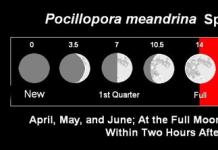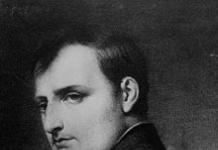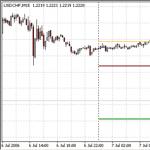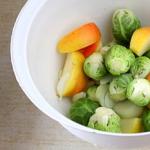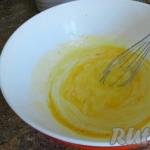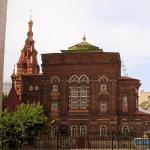Gone are the days when, when buying peonies, people said: “Give me two red ones and one pink one.” But it was like that. Now, having studied catalogs, sophisticated gardeners come for specific varieties. But peonies of domestic selection are not asked very often. Why? They are simply not well known.
It is known that until the middle of the last century, breeding work with peonies was not carried out in Russia. In the first post-war years, about 200 varieties of peonies, mainly of French selection, arrived from Germany to the Main Botanical Garden. There was a lot of misgrading and confusion in the names of varieties. In 1949, a breeding group was created to develop domestic varieties of peonies. Breeders set several goals: to obtain a compact bush with strong, erect stems and highly decorative qualities of the flower itself, to develop cut varieties with a peduncle length of 35-40 cm, to create varieties of both early and late flowering periods.
Our breeders immediately enjoyed success. The pioneers of domestic peony selection managed to obtain varieties that are still popular among true connoisseurs today. “Arkady Gaidar”, “In Memory of Gagarin”, “In Memory of Academician Tsitsin”, “Varenka”, “Snow Maiden”, “First Bouquet”, “Spring”, “Mirage” - the result of the work of Nadezhda Sergeevna Krasnova.
Some of its varieties, unfortunately, have not survived: “Luna” is white with a yellowish tint, “Salut” is a cut variety, very aromatic. It’s especially sad that the “Krasa” variety has been lost - a very large, 21 cm in diameter, white flower with a pinkish highlight.
Selection work with peonies was carried out not only in GBS, but also in other botanical gardens. At the branch of the Botanical Garden of Moscow State University, Anastasia Antonovna Sosnovets received the varieties “Iceberg”, “Anastasia”, “Arctic”, “White Sail”, “Evening Moscow”, “Cinderella”, “Cruiser “Aurora””. The varieties “Torch”, “Eaglet”, “In Memory of Cosmonauts”, “Nakhodka” were created by Vera Fedotievna Fomicheva.
"Altai News" of a rare lilac-pink color with wavy petals was bred at the Altai experimental station by Zinaida Ivanovna Luchnik. I consider this early variety to be the pride of domestic selection.

Not only professionals Amateur breeders also made a great contribution. Mikhail Ivanovich Akimov is a breeder from God. Its varieties: “Alyonushka”, “Valentina Tereshkova”, “Golden Fleece”, “Major Gagarin”, “Moscow”, “Spark of Hope”, “Olympics-80”, “Moscow Evenings”, “Russia”, “Typhoon”.
Tatyana Ivanovna Fomina worked on white peonies: “Pearl”, “Snow Globe”, “Black Sea Gull”, “Snow White”, “Foam”.
Talina Ulanova" and "Victory" are the result of the work of Stepan Davydovich Kupolyan. From 1958 to this day, the wonderful talented amateur breeder Vladimir Meerovich Dubrov has been working on the creation of new varieties. His peonies: "Mom's Heart", "Svetlana Udintseva", "Podmoskovny" ", "Coolness".
The American is weak against our Varenka!
It should be noted that many domestic varieties are in no way inferior to varieties of foreign selection, and some are even superior to them. For example, the American peony "Glory Hallelujah" with a lilac-pink color is similar to our "Varenka", however, "Varenka" has a more compact bush and stronger stems. Many domestic varieties at peony exhibitions receive the highest marks from the commission and can compete with the best varieties of foreign selection. Thus, “Olympiad-80”, “Svetlana Udintseva”, “Typhoon”, “Varenka”, “Pearl Placer” and many others became winners of shows at VDNKh and in the Moscow Flower Growers club on Novinsky Boulevard. As a rule, it is after such exhibitions that gardeners begin to become interested in domestic varieties. Although if we compare impartially, not so many of our peonies can seriously compete with foreign ones. Domestic varieties of other plants may be preferred as they are more stable in our climatic conditions. But this is not the case with peonies; they are all frost-resistant. A snow cover of 30-40 cm provides them with a good rest period. And very few foreign varieties feel worse here than in their homeland. For example, the American "Solange" produces full flowering only in very hot summers. But this is rather an exception to the rule.
Why are we not “ahead of the rest” in the field of peonies? The main reason for our lag behind our foreign colleagues is that we started late. Closing a gap of more than a century is not easy.
The period of plant development from the moment of sowing the seeds to the first flowering is long, at least 6-8 years. The range of peonies changes very slowly, unlike other flower crops - tulips, daffodils, gladioli. Krasnova began crossing peonies in the 1950s, then watched the seedlings for ten years and only then sent them to the variety plot. And America at that time was already dictating the fashion for non-double varieties. In general, as far as fashionable innovations are concerned, our gardeners have long been conservative and valued peonies mainly for size and denseness. If there was a variety with a flower that looked like a head of cabbage, it would be the most popular! In 1959, Krasnova developed the Mirage variety with a Japanese-shaped flower, but it did not become a hit. Recently, not only semi-double varieties, but also flowers of simple shapes have finally been appreciated.
Today, much attention is paid to creating low-growing, border peonies. A wonderful variety "Yauza" has been developed. Compact, strong bush 50 cm high with pink double flowers. Unfortunately, it is little known to our gardeners.
An interesting direction is to obtain varieties with coral and yellow flower colors. Foreign breeders have already achieved success. "Coral Charm" was released back in 1964, and we still have nothing to brag about.
Plant peonies on your plots not only of foreign selection, but also of our own, domestic ones. During mass flowering, you will see that our varieties can even give “foreigners” a head start! Thus, the “Altai News” variety, which blooms at the end of May, has no equal. The bush is more than a meter high and has up to 70 flowers!
To prevent botrytis (gray rot), before planting them in a permanent place, keep dried cuttings for 2-3 hours in a clay mash with copper sulfate (consistency of sour cream + 5 g of copper sulfate per 1 liter of water).
If you plant early, mid, mid-late and late varieties, the peony flowering festival will last. Thus, “Altai News” blooms already in the twentieth of May, and “Pobeda” - in early July. Peonies can decorate the garden for up to two months!
We recommend the most reliable and highly decorative varieties of peonies of domestic selection

"Arkady Gaidar" (Krasnova, 1958) - a densely double flower, hemispherical in shape, very densely built, bright red, with a deep crimson tint. Flower diameter -17 cm. The aroma is strong and pleasant. Bush 95 cm high, semi-spreading, multi-stemmed. The stems are strong and densely leafy. The leaves are large, dark green, with red veins and petiole. It reproduces well and is not affected by disease. Flowering period is late (end of June).

"White Sail" (Sosnowiec, 1961) - a double flower, crown-shaped, white, with a creamy highlight inside. Flower diameter -15 cm. Bush 90-95 cm high, slightly spreading. The stems are strong and thick. The leaves are very large, dark green. The leaf petioles are colored reddish. Flowering period - early-medium.

“Varenka” (Krasnova, 1957) is a densely double flower, rose-shaped, pink, the tips of the petals are a soft lilac color, rare for peonies. Flower diameter -18 cm. Pleasant aroma (smell of linden). The bush is compact, the stems are strong, the leaves are dark green, with wide lobes. The height of the bush is 75-80 cm. It is not affected by diseases. Flowering period is early.

"Spring" (Krasnova, 1959) - a double flower, crown-shaped, densely built. The outside is light pink, the inner petals are short, creamy pink, with a yellowish tint. Flower diameter -17 cm. Jasmine aroma. The bush is compact, 85 cm high. The stems are long, slightly drooping; the leaves are large, bright green. Not affected by diseases.

"Mirage" (Krasnova, 1959) - a Japanese-shaped flower, light crimson, staminodes of the same color, with golden splashes. Flower diameter -13 cm. The aroma is jasmine, strong. The bush has a very beautiful shape, 110 cm high. The stems are strong, the leaves are dark green. Flowering period is mid-early. An excellent park variety.

"Altai News" (Luchnik, 1963) is a simple flower of bright lilac-pink color. The corolla is two-row, with large, originally folded petals. Flower diameter is 14-15 cm. The bush is tall, 100-120 cm, compact, grows quickly. The stems are strong and thick. The leaves are pointed, bright green. It is distinguished by early and very abundant flowering.

“In memory of Academician Tsitsin” (Krasnova, 1969) - a densely double flower, rose-shaped, very large, diameter up to 20 cm, cream-colored, with a pink tint. The petals have a yellow tint at the base. Towards the end of flowering, the color brightens and the flower becomes almost white. The bush is slightly spreading, 90 cm high. The stems are strong, the leaves are large, dark green. Flowering period is average. Cut variety, one of the best in domestic selection.

“In Memory of Gagarin” (Krasnova, 1957) - a double flower, pink-shaped, the outer petals are flesh-pink, the central ones are soft pink, with a yellow base. Some central petals have a carmine edging. Flower diameter -18 cm. The aroma is weak, pleasant. The bush is compact, 90 cm high. The stems are strong, the leaves are dark green and shiny. Flowering period is average.

“Victory” (Kupolyan, 1957) is a double flower, rose-shaped, intensely red. Flower diameter -16 cm. Stems are straight and strong. The bush is compact, 80 cm high. The leaves are medium-sized, the leaf lobes are narrow and shiny. Valued for its late flowering period (early July).
“Snow White” (Fomina, 1952) is a double flower, pink-shaped, pure white, rare for peonies, without inclusions or shades. The diameter of the flower is 16-17 cm. The bush is slightly spreading, the stems are strong, the leaves are medium-sized, light green. Flowering period is average.
“Pearl scattering” (Gorobets, 1989) - a flower of the Japanese type, the corolla is pearlescent, lilac-pink, the staminodes are long, with pointed bright pink tips. Flower diameter -14 cm. Strong aroma (smell of rose). The bush is 80-85 cm high, slightly spreading, growing quickly. The stems are strong, the leaves are small, bright green. One of the earliest varieties of the Japanese group.
"Spark of Hope" (Akimov, 1975) - double flower, rose-shaped, red-pink. Diameter - 20 cm. Spreading bush, 65-70 cm high. Stems are thick, but weak, require support. Leaves with large lobes, light green. Early, in the Moscow region it blooms in early June.
"Kuril Islands" (Dubrov, 1994) - a flower of the Japanese type, pink-lilac, light staminodes, in the center of the flower there is a pink tuft. Flower diameter - 18 cm. Bush 100 cm high, slightly spreading. The stems are strong. The leaves are dark green. Flowering period is mid-late.
“First Bouquet” (Krasnova, 1956) is a double flower, crown-shaped, pale pink, with yellow-cream central petals. The diameter of the flower is 15 cm. The bush is loose, 90 cm high. The stems are quite strong. It blooms first among terry varieties with light flower color.
"Snow Maiden" (Krasnova, 1957) is a double flower, initially crown-shaped, then pink-shaped, white, densely built. The diameter of the flower is 18 cm. The bush is compact, 90 cm high. The stems are quite strong, the leaves are large, with wide lobes. Flowering period is average.

Tree peony seeds can be purchased at any time of the year, but what if they are given as a gift in winter? Leave it until spring, or start sprouting? And if the second, then how?
2012-07-19
Gone are the days when, when buying peonies, people said: “Give me two red ones and one pink one.” But it was like that. Now, having studied catalogs, sophisticated gardeners come for specific varieties. But peonies of domestic selection They don't ask that often. Why? They are simply not well known.
It is known that until the middle of the last century, breeding work with peonies was not carried out in Russia. In the first post-war years, about 200 varieties of peonies, mainly of French selection, arrived from Germany to the Main Botanical Garden. There was a lot of misgrading and confusion in the names of varieties. In 1949, a breeding group was created with the aim of breeding domestic varieties of peonies. Breeders set several goals: to obtain a compact bush with strong, erect stems and highly decorative qualities of the flower itself, to develop cut varieties with a peduncle length of 35-40 cm, to create varieties of both early and late flowering periods.
The pioneers of domestic peony selection managed to obtain varieties that are still popular among true connoisseurs today. ‘Arkady Gaidar’, ‘In Memory of Gagarin’, ‘In Memory of Academician Tsitsin’, ‘Varenka’, ‘Snegurochka’, ‘First Bouquet’, ‘Spring’, ‘Mirage’ - the result of the work of Nadezhda Sergeevna Krasnova. Some of its varieties, unfortunately, have not survived: ‘Luna’ is white with a yellowish tint, ‘Salyut’ is a cut, very fragrant variety. It’s especially sad that the ‘Krasa’ variety has been lost - a very large, 21 cm in diameter, white flower with a pinkish backlight.
Our advice
To prevent botrytis (gray rot), before planting them in a permanent place, keep dried cuttings for 2-3 hours in a clay mash with copper sulfate (consistency of sour cream + 5 g of copper sulfate per 1 liter of water).
Selection work with peonies was carried out not only in GBS, but also in other botanical gardens. At the branch of the Botanical Garden of Moscow State University, Anastasia Antonovna Sosnovets received the varieties ‘Iceberg’, ‘Anastasia’, ‘Arctic’, ‘White Sail’, ‘Evening Moscow’, ‘Cinderella’, ‘Cruiser “Aurora”’. Varieties ‘Torch’, ‘Eaglet’, ‘In Memory of Cosmonauts’, ‘Nakhodka’ were created by Vera Fedotievna Fomicheva. ‘Altai News’ of a rare lilac-pink color with wavy petals was bred at the Altai experimental station by Zinaida Ivanovna Luchnik. I consider this early variety to be the pride of domestic selection.
Not only professionals
Amateur breeders also made a great contribution. Mikhail Ivanovich Akimov is a breeder from God. Its varieties: ‘Alyonushka’, ‘Valentina Tereshkova’, ‘Golden Fleece’, ‘Major Gagarin’, ‘Moscow’, ‘Iskranadezhdy’, ‘0lympiad-80’, ‘Moscow Evenings’, ‘Russia’, ‘Typhoon’. Tatyana Ivanovna Fomina worked on white peonies: ‘Pearl’, ‘Snow Globe’, ‘Black Sea Gull’, ‘Snow White’, ‘Foam’. ‘Talina Ulanova’ and ‘Victory’ are the result of the work of Stepan Davydovich Kupolyan. From 1958 to this day, a wonderful, talented amateur breeder, Vladimir Meerovich Dubrov, has been working on the creation of new varieties. His peonies: ‘Mom’s Heart’, ‘Svetlana Udintseva’, ‘Podmoskovny’, ‘Coolness’.
‘Arkady Gaidar’(Krasnova, 1958) - a densely double flower, semi-spherical in shape, very densely built, bright red, with a deep crimson tint. The diameter of the flower is 17 cm. The aroma is strong and pleasant. Bush 95 cm high, semi-spreading, multi-stemmed. The stems are strong and densely leafy. The leaves are large, dark green, with red veins and petiole. It reproduces well and is not affected by disease. Flowering period is late (end of June).
'Snow White'(Fomina, 1952) - a double flower, pink-shaped, pure white, rare for peonies, without inclusions or shades. The diameter of the flower is 16-17 cm. The bush is slightly spreading, the stems are strong, the leaves are medium-sized, light green. Flowering period is average.
'White Sail'(Sosnowiec, 1961) - a double flower, crown-shaped, white, with a creamy highlight inside. The diameter of the flower is 15 cm. The bush is 90-9 5 cm high, slightly spreading. The stems are strong and thick. The leaves are very large, dark green. The leaf petioles are colored reddish. Flowering period - early-mid.
‘Varenka’(Krasnova, 1957) - a densely double flower, rose-shaped, pink, the tips of the petals are a soft lilac color, rare for peonies. The diameter of the flower is 18 cm. The aroma is pleasant (smell of linden). The bush is compact, the stems are strong, the leaves are dark green, with wide lobes. The height of the bush is 75-80 cm. It is not affected by diseases. Flowering period is early.
'Spring'(Krasnova, 1959) - double flower, crown-shaped, densely built. The outside is light pink, the inner petals are short, creamy pink, with a yellowish tint. Flower diameter - 17 cm. Jasmine aroma. The bush is compact, 85 cm high. The stems are long, slightly drooping; the leaves are large, bright green. Not affected by diseases.
‘Pearl scattering’(Gorobets, 1989) - a flower of the Japanese type, the corolla is pearlescent, lilac-pink, the staminodes are long, with pointed bright pink tips. The diameter of the flower is 14 cm. The aroma is strong (smell of rose). The bush is 80-85 cm high, slightly spreading, growing quickly. The stems are strong, the leaves are small, bright green. One of the earliest varieties of the Japanese group.
‘Spark of Hope’(Akimov, 1975) - double flower, rose-shaped, red-pink. Diameter - 20 cm. Spreading bush, 65-70 cm high. Stems are thick, but weak, require support. Leaves with large lobes, light green. Early, in the Moscow region it blooms in early June.
'Kurile Islands'(Dubrov, 1994) - a flower of the Japanese type, pink-lilac, light staminodes, in the center of the flower there is a pink tuft. The diameter of the flower is 18 cm. The bush is 100 cm high, slightly spreading. The stems are strong. The leaves are dark green. Flowering period is mid-late.
'Mirage'(Krasnova, 1959) - a Japanese-shaped flower, light crimson, staminodes of the same color, with golden splashes. The diameter of the flower is 13 cm. The aroma is jasmine, strong. The bush has a very beautiful shape, 110 cm high. The stems are strong, the leaves are dark green. Flowering period is mid-early. An excellent park variety.
‘Altai News’(Luchnik, 1963) - a simple flower of bright lilac-pink color. The corolla is two-row, with large, originally folded petals. Flower diameter is 14-15 cm. The bush is tall, 100-120 cm, compact, grows quickly. The stems are strong and thick. The leaves are pointed, bright green. It is distinguished by early and very abundant flowering.
‘In memory of academician Tsitsin’(Krasnova, 1969) - a densely double flower, pink-shaped, very large, diameter up to 20 cm, cream-colored, with a pink tint. The petals have a yellow tint at the base. Towards the end of flowering, the color brightens and the flower becomes almost white. The bush is slightly spreading, 90 cm high. The stems are strong, the leaves are large, dark green. Flowering period is average. Cut variety, one of the best in domestic selection.
‘In memory of Gagarin’(Krasnova, 1957) - a double flower, pink-shaped, the outer petals are flesh-pink, the central ones are pale pink, with a yellow base. Some central petals have a carmine edging. The diameter of the flower is 18 cm. The aroma is weak, pleasant. The bush is compact, 90 cm high. The stems are strong, the leaves are dark green and shiny. Flowering period is average.
‘First bouquet’(Krasnova, 1956) - a double flower, crown-shaped, pale pink, with yellow-cream central petals. The diameter of the flower is 15 cm. The bush is loose, 90 cm high. The stems are quite strong. It blooms first among terry varieties with light flower color.
'Victory'(Kupolyan, 1957) - a double flower, pink-shaped, intensely red. The diameter of the flower is 16 cm. The stems are straight and strong. The bush is compact, 80 cm high. The leaves are medium-sized, the leaf lobes are narrow and shiny. Valued for its late flowering period (early July).
'Snow Maiden'(Krasnova, 1957) - 1 double flower, initially crown-shaped, then pink-shaped, white, densely built. The diameter of the flower is 18 cm. The bush is compact, 90 cm high. The stems are quite strong, the leaves are large, with wide lobes. Flowering period is average.
The American is weak against our Varenka!
It should be noted that many domestic varieties are in no way inferior to varieties of foreign selection, and some are even superior to them. For example, the American peony ‘Glory Hallelujah’ with its lilac-pink color is similar to our ‘Varenka’, but ‘Varenka’ has a more compact bush and stronger stems. Many domestic varieties at exhibitions receive the highest marks from the commission and can compete with the best varieties of foreign selection. Thus, '0lympiad-80', 'Svetlana Udintseva', 'Typhoon', 'Varenka', 'Pearl Placer' and many others became winners of shows at VDNKh and in the Moscow Flower Growers club on Novinsky Boulevard. As a rule, it is after such exhibitions that gardeners begin to become interested in domestic varieties.
Although if we compare impartially, not so many of our peonies can seriously compete with foreign ones. Domestic varieties of other plants may be preferred as they are more stable in our climatic conditions. But this is not the case with peonies; they are all frost-resistant. A snow cover of 30-40 cm provides them with a good rest period. And very few foreign varieties feel worse here than in their homeland. For example, the American ‘Solange’ produces full flowering only in very hot summers. But this is rather an exception to the rule.
On a note
If you plant early, mid, mid-late and late varieties, the peony flowering festival will last. So, ‘Altai News’ blooms already in the twentieth of May, and ‘Pobeda’ - in early July. Peonies can decorate the garden for up to two months!
Why are we not “ahead of the rest” in the field of peonies? The main reason we lag behind our foreign colleagues is that we started late. Closing a gap of more than a century is not easy. The period of plant development from the moment of sowing the seeds to the first flowering is long, at least 6-8 years. The range of peonies changes very slowly, unlike other flower crops - gladioli. Krasnova began crossing peonies in the 1950s, then watched the seedlings for ten years and only then sent them to the variety plot. And America at that time was already dictating the fashion for non-double varieties. In general, as far as fashionable innovations are concerned, our gardeners have long been conservative and valued peonies mainly for size and denseness. If there was a variety with a flower similar to , it would be the most popular! In 1959, Krasnova developed the ‘Mirage’ variety with a Japanese-shaped flower, but it did not become a hit. Recently, not only semi-double varieties, but also flowers of simple shapes have finally been appreciated.
Today, much attention is paid to creating low-growing, border peonies. A wonderful variety ‘Yauza’ has been developed. Compact, strong bush 50 cm high with pink double flowers. Unfortunately, it is little known to our gardeners. An interesting direction is to obtain varieties with coral and yellow flower colors. Foreign breeders have already achieved success. ‘Coral Charm’ was released back in 1964, and we still have nothing to brag about. Plant peonies on your plots not only of foreign selection, but also of our own, domestic ones. During mass flowering, you will see that our varieties can even give “foreigners” a head start! Thus, the variety ‘Altai News’, which blooms at the end of May, has no equal. The bush is more than a meter high and has up to 70 flowers! Galina Dyakova
Peonies. Video
Fdwdi41KKAo
- Look at the topic
- Tell your friends
What varieties of peonies do we like best? Or which varieties would we never give up?
At first, as a rule, gardeners are attracted to double varieties with dense and heavy inflorescences. But then you want something easier. This is where our gaze falls on semi-double and simple forms, and on exquisite Japanese peonies, which form the basis of amateur peonies.
What about color? There are already white and pink peonies in the garden, red and dark red ones are planted. But the heart of a true peony connoisseur will not rest until he finds and plants varieties with a variety of flower colors. Cream, coral and other amazing colors with bold color combinations and different flower shapes are fascinating.
So which varieties of peonies are the best for me?
Peony variety "Ballerina"
The snow had not yet completely melted, but the red noses of peonies were already appearing from the ground that had just begun to thaw.
This is the “Ballerina” variety - very early, blooms at the end of May, almost immediately after the species peonies (, evading ()).
The variety “Ballerina” was obtained by the famous American breeder A.P. Sanders. Its flower is semi-double, graceful in shape and really resembles a ballerina’s skirt. At first it is creamy white in color, even with a greenish tint, but later lightens to pure white.
The mature bush “Ballerina” looks beautiful with strong stems and large leaves - this is a real decoration of the spring garden.

In the photo: peonies of the varieties “Ballerina” and “Henry Boxtox”
Peony variety "Henry Boxtos"
Is it possible for a peony lover to live without the Henry Bockstoce variety? Of course not!
The variety is mid-early, but very slowly opens its large buds on thick stems. You wait, wait, wait... And finally, gradually, petal by petal, wonderful flowers begin to bloom. Red, the color of blood. Huge. Heavy. Full-double.
Peony flowers of the "Henry Boxtos" variety are ideally pink-shaped, with an internal "bud". And when this inner “bud” also opens, small sharp petals and staminodes are found in the center, partially framed by a thin yellow border.
Incredibly beautiful variety! The sight of the Henry Boxtos bush blooming in full bloom delights everyone without exception.
Peony variety "Coral Sunset"
“Coral Sunset” is probably one of the most attractive varieties of the “coral” series of peonies by breeder Samuel Wissing.
This variety has the most intense orange hue when blooming and gives the largest number of shading transitions during flower aging - from peachy-pink to yellowish-creamy at the very end.
The flowers of the Coral Sunset peony are large, semi-double. They start out cupped and then the outer petals begin to curve outward to form a more complex shape. The bush is above average, strong, the stems are strong and straight.
The flowering of a large bush shows at once the whole range of coral-cream shades due to the different timing of the opening and beginning of withering of the flowers. No wonder the name of the peony variety “Coral Sunset” is translated as “Coral Sunset”.

In the photo: peonies of the varieties “Coral Sunset” and “Pastelegance”
Peony variety "Pastelegans"
Peony "Pastelegance" is a relatively new variety in Russia, semi-double or almost double, with a subtle aroma of vanilla. It was first shown here in 2013 at the flower exhibition of the Moscow Flower Growers club at the State Biological Museum of K.A. Timiryazev, where he created a real sensation.
The peony flower "Pastelegance" is such an unusual color that it cannot be called pink, yellow, or peach. This is a unique shade, similar to a mixture of fermented baked milk with baked milk.
The hybrid, which blooms in the mid-early period, was bred by Bill Seidle in 1989, but for a long time was almost inaccessible to flower growers. Now large American and European nurseries have begun commercial propagation of the Pastelegans peony, but it still remains rare and expensive.
Peony variety "Lemon Chiffon"
True yellow color in herbaceous peonies, not in Ito hybrids, has long been a “fixe idea” for most breeders. Until, in 1981, David Rieth registered the Lemon Chiffon peony variety. Its flower is truly yellow with a lemon tint. And most importantly, it keeps the original color for a long time. By the end of flowering it, of course, fades a little.
The variety "Lemon Chiffon" has a flower that is almost double, but loose. And in the first years after planting, it produces mostly semi-double flowers. The bush is beautifully shaped, has strong stems and spectacular leaves. Flowering period is mid-early.

In the photo: peonies of the varieties “Lemon Chiffon” and “Varenka”
Peony variety "Varenka"
The curator of the GBS peony collection, G.M. Dyakova, has an article about domestic varieties of peonies with the title: “The American is rather weak against our “Varenka”.” So it is, against “Varenka” - rather weak!
Peony variety “Varenka” is an ideal variety in every sense, a masterpiece of domestic selection. It was bred by Nadezhda Krasnova in 1958. Medium height, harmonious bush with strong stems and beautiful leaves. The flowers are dark pink, densely double, shiny, regular pink in shape and very fragrant. Blooms in mid-season.
Peony variety "Olympics-80"
For many years, there has been an increased interest among flower growers in the “Olympiad-80” variety from Mikhail Akimov. It seems that its flowers are not so huge, and the color is ordinary pink, but there is something about it that catches you. When an adult bush of this variety blooms, you can’t take your eyes off it...
The shape of the flower is classic bomb-shaped (when the large petals of the first row contain a ball of narrower petals), but in the “Olympiada-80” variety they are also curly, and yellow petalodes are visible inside the curls. Complex combination. You need to see this, or even better, plant a peony of this variety and admire it every year. Every year the maturing bush shows itself more and more brightly - it blooms more profusely, and the flowers become larger and denser.

In the photo: peonies of the “Olympiada-80” and “White Cap” varieties
White Cap peony
The White Cap peony variety has a very contrasting Japanese flower shape. Inside the dark pink outer petals are narrower white petals with pink strokes.
This is one of the most spectacular and consistently flowering varieties with a Japanese form.
The White Cap peony bush is slightly taller than average with strong stems. Flowering period is average. It looks very beautiful both in the garden and in a vase.
Peony variety "Kansas"
The color of the flesh of a ripe watermelon is how the flower color of the Kansas peony variety is sometimes characterized. This is one of the best terry varieties, although it is not at all a modern novelty - it was bred by Biter in 1940.
The "Kansas" peony has a pink-shaped flower with an internal "bud", bright red with a slight lilac tint. The bush is of medium height, holds its shape well thanks to its strong stems. Flowering period is average. The flowering bush looks fantastically beautiful!

In the photo: peony variety "Kansas"; Peonies of the "Anne Cousins" variety in a bouquet with phlox
Peony variety "Anne Cousins"
In many varieties of peonies, each individual flower does not last long, on average up to 10 days (sometimes due to the opening of the side buds, the flowering of each peduncle is extended). But we want to extend the flowering of peonies in the garden for as long as possible!
And now, when almost all varieties of peonies have already bloomed, one of the latest varieties begins to bloom - “Ann Cousins”.
The flower of this variety is snow-white and densely double. Yes, somewhere in the depths a greenish-yellowish glow is visible, but this only emphasizes the impeccable whiteness of its petals. The flowers are large, perfectly pink-shaped, with a rose aroma.
The height of the bush is slightly above average. And although its stems are thick and strong enough to hold large flowers, support is necessary.
The “Anne Cousins” variety is wonderful both in the garden and for a bouquet - the last bouquet of peonies.
There are many more beautiful peonies that can be added to the “list of favorites” from the huge number of existing varieties. Each gardener undoubtedly has his own special favorites. But these varieties of peonies always attract attention with their beauty, both classic and new, which someday will definitely become classic too.
On the website website
on the website website
on the website website
|
|
Weekly Free Site Digest website
Every week, for 10 years, for our 100,000 subscribers, an excellent selection of relevant materials about flowers and gardens, as well as other useful information.
Subscribe and receive!
Which varieties do we like best? Or which varieties would we never give up?
At first, as a rule, one is attracted to terry varieties, thick and heavy, but then one wants something lighter, and this is where one looks at semi-double and simple forms and exquisite Japanese ones. What about color? There are already white and pink ones in the garden, red and dark red ones are planted, but the heart of a true peony connoisseur will not rest until he finds and plants yellow, cream, coral and other amazing varieties with bold color combinations and different flower shapes.
So which peonies are the best for me?
Ballerina.
The snow had not yet completely melted, but the red noses of peonies were already appearing from the ground that had just begun to thaw. What kind of variety is this? Ballerina!
Very early, blooms at the end of May, almost immediately after the species peonies. It was obtained by the famous American breeder A.P. Sanders. The flower is semi-double, graceful in shape and really resembles a ballerina's skirt. At first it is creamy white, even with a greenish tint, but lightens to pure white. An adult bush with strong stems and large leaves looks beautiful - a real decoration for a spring garden.
HenryBoxtos(Henry Bockstoce).
Is it possible to live without Henry Boxtos? Of course not! The variety is mid-early, but it opens its large buds on thick stems so slowly. You wait, wait, wait, and finally the flowers begin to bloom, petal by petal. Reds. Blood colors. Huge. Heavy. Full-double.
Ideal rose-shaped, with an internal “bud”. And when this inner bud also opens, small sharp petals and staminodes are revealed in the center, partially framed by a thin yellow border. Incredibly beautiful variety. The sight of a bush blooming in full force delights everyone without exception.
Coral Sunset.
This is probably one of the most attractive varieties of Samuel Wissing's coral series. It has the most saturated orange hue when blooming and the largest number of shading transitions during the aging of the flower - from peachy-pink to yellowish-creamy at the very end.
The flowers are large, semi-double, cup-shaped at first, then the outer petals begin to curve outward, forming a more complex shape. The bush is above average, strong, the stems are strong and straight. The flowering of a large bush shows at once the whole gamut of coral-cream shades due to the different timing of the opening and the beginning of withering of the flowers. No wonder its name translates as “coral sunset.”
Pastelegams (Pastelegance). A relatively new variety in Russia, it was first shown here at the exhibition of the Moscow Flower Growers club at the State Biological Museum K.A. Timiryazev in 2013 and created a real sensation. It is such an unusual color that it cannot be called pink, yellow, or peach; it is a unique shade, similar to a mixture of fermented baked milk with baked milk.
The flower is semi-double or almost double, with a subtle vanilla aroma.
The hybrid blooms in the mid-early period. Bred by Bill Seidle in 1989, but was almost unavailable for a long time. Now large American and European nurseries have begun to propagate it commercially, but it remains rare and expensive.
Lemon Chiffon.
True yellow color in herbaceous peonies, not Ito hybrids, was for a long time an idea fix for most breeders, until David Rith registered the Lemon Chiffon variety in 1981. It's really yellow with a lemon tint. And most importantly, the color lasts a long time. By the end of flowering, of course, it fades a little. The flower is almost double, but loose, although in the first years after planting it has mostly semi-double flowers. A beautifully shaped bush, strong stems and showy leaves. Flowering period is mid-early.

Varenka.
At G.M. Dyakova, curator of the GBS peony collection, has an article about domestic varieties with the title “The American is a bit weak against our Varenka. So it is, against Varenka - rather weak! Varenka is an ideal variety in every sense, a masterpiece of domestic selection. Bred by Nadezhda Krasnova in 1958. Medium height, harmonious bush with strong stems and beautiful leaves. The flowers are dark pink, densely double, shiny, regular pink in shape and very fragrant. Blooms in mid-season.
Olympics-80.
For many years there has been an increased interest in this variety by Mikhail Akimov. It seems that the flowers are not huge, and the color is ordinary pink, but there is something about it that catches you. When an adult bush blooms, you can’t take your eyes off it. The shape of the flower is classic bomb-shaped (when on the large petals of the first row there is a ball of narrower petals), but at the Olympics-80 they are also curly, and yellow petalodes are visible inside the curls. Complex combination. This needs to be seen, or even better, planted and admired every year. Every year the bush matures and shows itself more clearly - it blooms more profusely, and the flowers become larger and denser.
White Cap.
This variety with a Japanese flower shape is even more contrasting. Inside the dark pink outer petals are narrower white petals with pink strokes. This is one of the most spectacular and consistently flowering varieties with a Japanese form. The bush is slightly taller than average, with strong stems. Flowering period is average. It looks very beautiful both in the garden and in a vase.
Kansas.
The color of the flesh of a ripe watermelon is how the Kansas variety is sometimes characterized. This is one of the best terry varieties, although it is no longer a new product; it was bred by Biter in 1940. The flower is pink-shaped with an internal “bud”, bright red with a slight lilac tint. The bush is of medium height, holds its shape well thanks to its strong stems. Flowering period is average. The flowering bush looks simply fantastically beautiful.
 Emm Cousins.
Emm Cousins.
A certain variety of peony does not bloom for long, on average up to 10 days, sometimes due to the side buds the flowering is extended. But I want to extend the flowering of peonies for as long as possible. And now, when almost all the varieties have already faded, one of the latest varieties, Anne Cousins, begins to bloom.
It is snow-white and densely doubled. Yes, somewhere in the depths a greenish-yellowish glow is visible, but this only emphasizes the whiteness of the petals. The flowers are large, perfectly pink-shaped, with a rose aroma.
The height of the bush is slightly above average, and although the stems are thick and strong enough to support large flowers, support is necessary. Perfect both in the garden and for a bouquet, the last bouquet of peonies.
You can add many more beautiful peonies to the list of your favorites from the huge number of existing varieties. Each gardener undoubtedly has his own special favorites. But these varieties always attract attention with their beauty, both classic and new, which someday will definitely become classic too.



